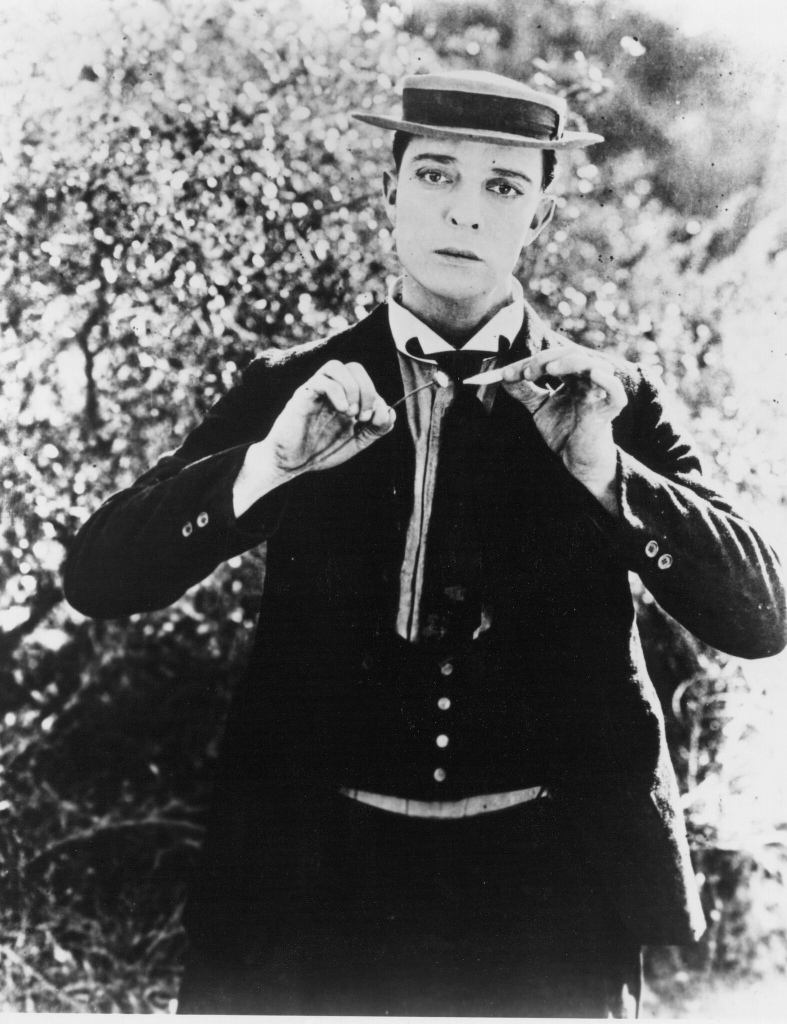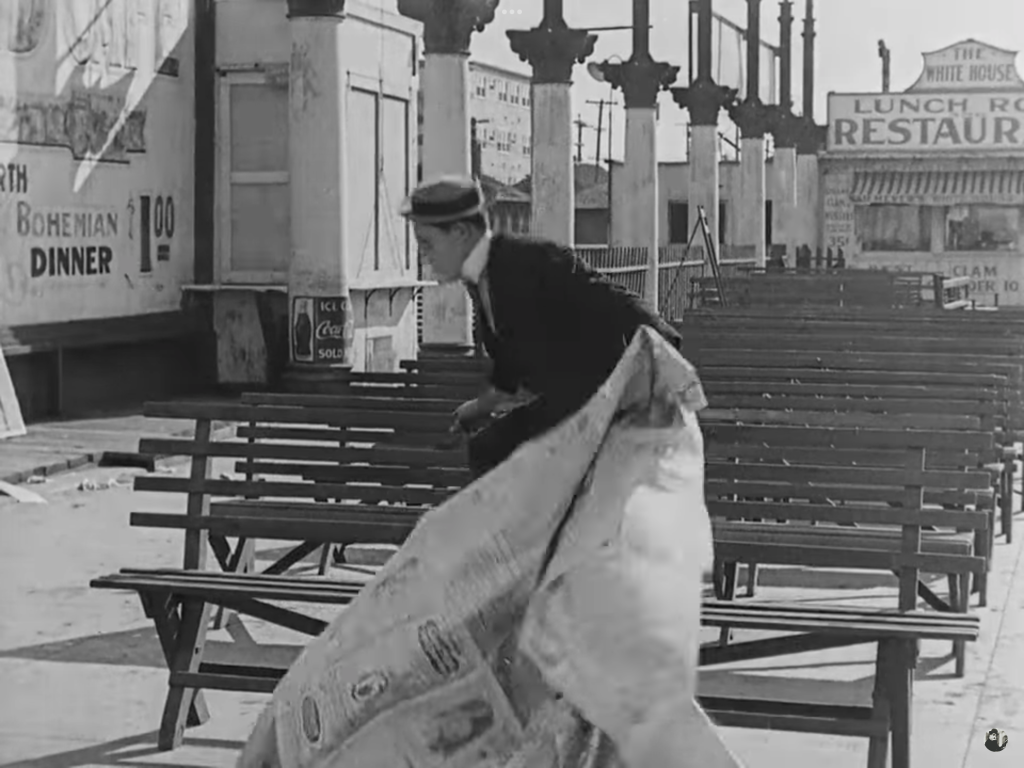Joseph Frank “Buster” Keaton (1895-1966) was an American comedy actor and filmmaker. Popularised during the Classical Era of Hollywood, Keaton specialised in directing and acting in his silent films. Keaton is known for his stoicism and deadpan expression (developed as part of his family vaudeville act ‘The Three Keatons’), while performing dangerously impressive slapstick stunts.

In 1919, Keaton set up ‘Buster Keaton Productions’ alongside film executive Joseph M. Schenk. Through this, he received complete creative freedom within each of his films. Collaborating with co-director Edward F. Cline, Keaton initially created a multitude of successful ‘two-reelers’. Alongside Charlie Chaplin and Harold Lloyd, Keaton created a numerous amount of silent films during this period, including the likes of One Week (1920), The High Sign (1921) and Cops (1922) which received wide critical acclaim.
Each of the films utilised an innumerable amount of visual gags within its storytelling, including: dangerously daring stunts, pan demonic chases, expressionistic gags and subtle critique of American society. The films were almost always shot on set in Los Angeles near the studio and Keaton often utilised long takes to illustrate a sense of realism within his films.
Expressionism can also be found within Keaton’s films, particularly through his use of surreal anti-realist devices – an example being the comically large newspaper in The High Sign. Keaton’s daring stunts and exaggerated body language could also considered to be a form of expressionism.

In wake of the success of Keaton’s short film success, he then moved onto to creating feature-length productions. The likes of Sherlock Jr. (1924) and The General (1926) are considered to be some of his best work, with Orson Welles remarking upon the latter as being “perhaps the greatest film ever made”.
Despite the decline of Keaton’s career in the 30s after he lost his artistic independence, his legacy continues to live on. His iconic gags are ever-present within contemporary cinema, and his deadpan expression will forever be evocative of the Classical Era of Hollywood.